The past century saw drastic changes in every aspect of society, including artistic interpretation. Cities grew exponentially, communication became easier and more accessible, and with each new technological innovation came the founding of new potential mediums, and subsequently the culminating awareness of new societal issues.
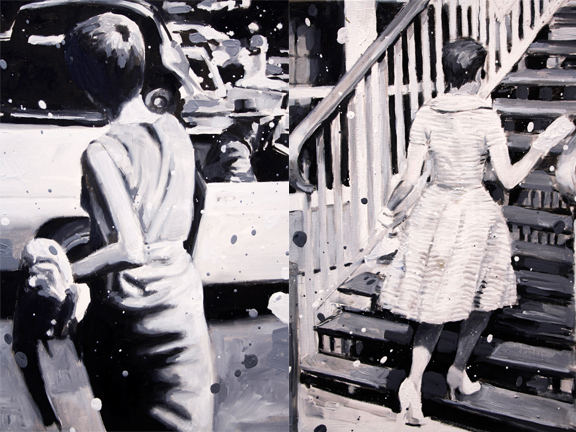 John Abrams, Seeing Seberg, 6 (left) and 8, Stairs (right) 2014, oil on panel, 16 x 12 inches each.
John Abrams, Seeing Seberg, 6 (left) and 8, Stairs (right) 2014, oil on panel, 16 x 12 inches each.
John Abrams’ Seeing Seberg is a tribute to Modernism, an area of philosophy hugely influential to the cultural development of the Western world. His subject is the new age French film Breathless, a 1960’s picture by Jean-Luc Godard exemplary of the contemporary French culture. Accompanied by Mozart’s Concerto for Clarinet, the exhibit consists of small-scale paintings of several venerated moments in the film that feature the protagonist Pauline, who is played by Jean Seberg. The film, with its combination of uplifting melody and the whimsical cinematography, conveys the nonchalant tone of modern Parisian life, which Abrams successfully imbeds into each portrait. The monochrome palette mimics the noir-et-blanche aesthetic perfectly.
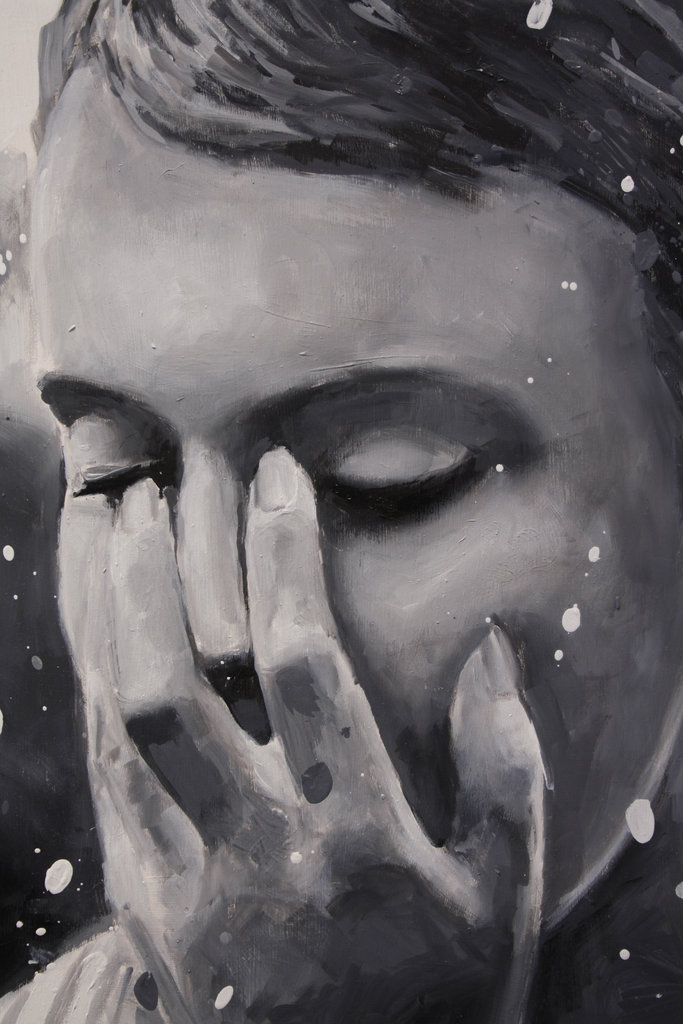 John Abrams, Seeing Seberg, 20, Head in hand, 2014, oil on panel, 16 x 12 inches.
John Abrams, Seeing Seberg, 20, Head in hand, 2014, oil on panel, 16 x 12 inches.
His applications of the paint vary from solid tonal variations, to shorter divided strokes, to textured globs of paint. Though employing the three methods would historically be considered terribly inconsistent, their systematic use conveys. The smoother transitions either emphasize the permanence of the surrounding cityscape, relatively motionless scenes, or dramatic emotion, whereas the divided brushstrokes demonstrate more dynamic movement and jovial expression. Present in each of the paintings are randomly-strewn drops of paint, which are strategically placed to either suggest the emphatic presence of the scene’s inherent light sources, the suspension of time, or perhaps even flaws in a filmstrip. In any case, they contribute to the works’ relation to the original film, with regard to the light-heartedness and blithe quality of the film’s portrayal and the tangible characteristics of cinema in general.
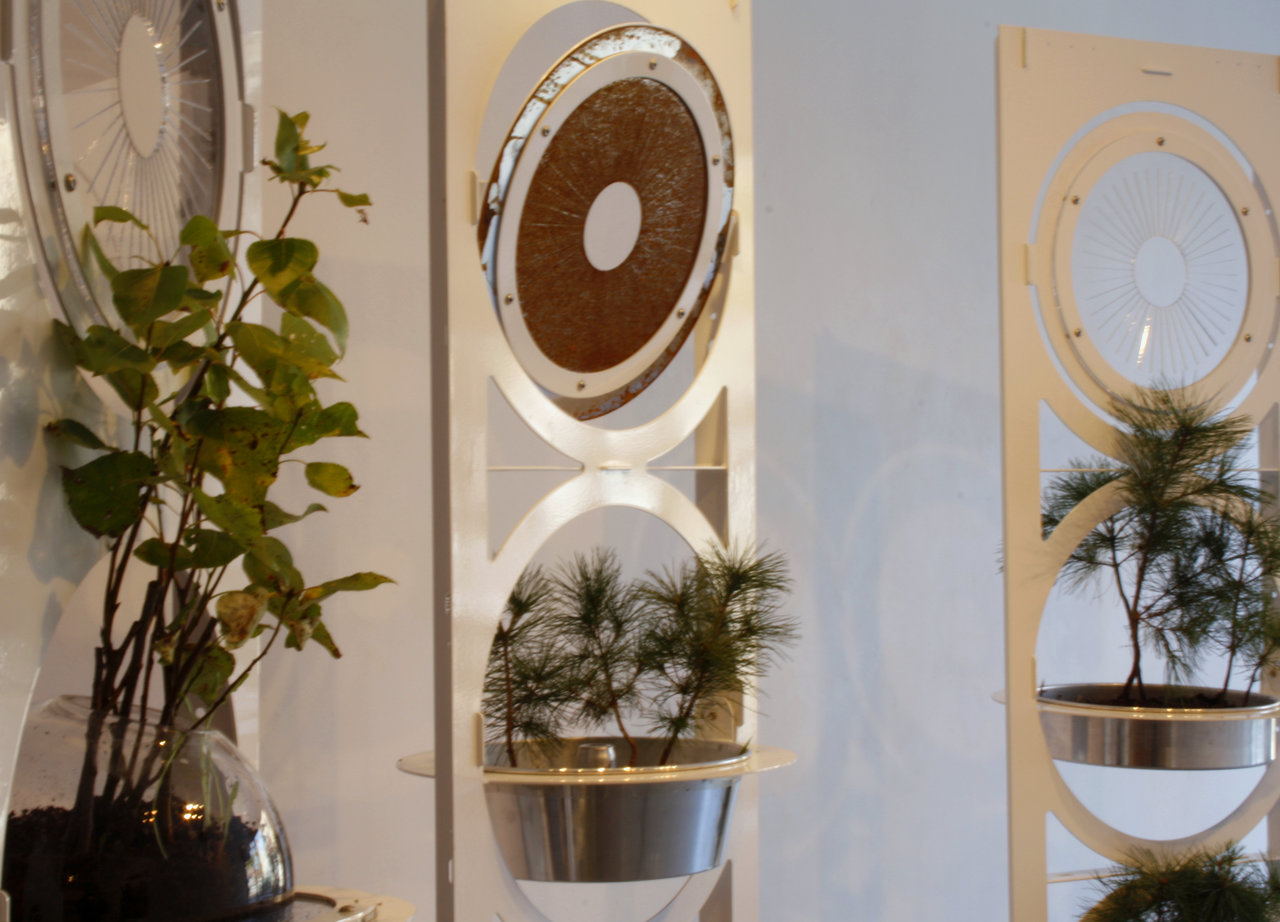 Candida Girling, Plant growing in totemic modular steel structure taken from Sculptural Living Wall Installation, 2014
Candida Girling, Plant growing in totemic modular steel structure taken from Sculptural Living Wall Installation, 2014
The post-war era saw the total reconstruction of infrastructure and reorganization of traditional urban lifestyles as a result of the massive expansion of cities and suburbia. Areas that had once been dominated by the natural environment made way for the new concrete jungle. Candida Girling, with her exhibit entitled A City Slice of Sky: An Urban Intervention, seems to coalesce the two extremes. It consists of multi-tiered panels with each tier containing either growing plants (white pine, rosemary, ivy, and poplar) or Plexiglas with cuts depicting the shape of a sun.
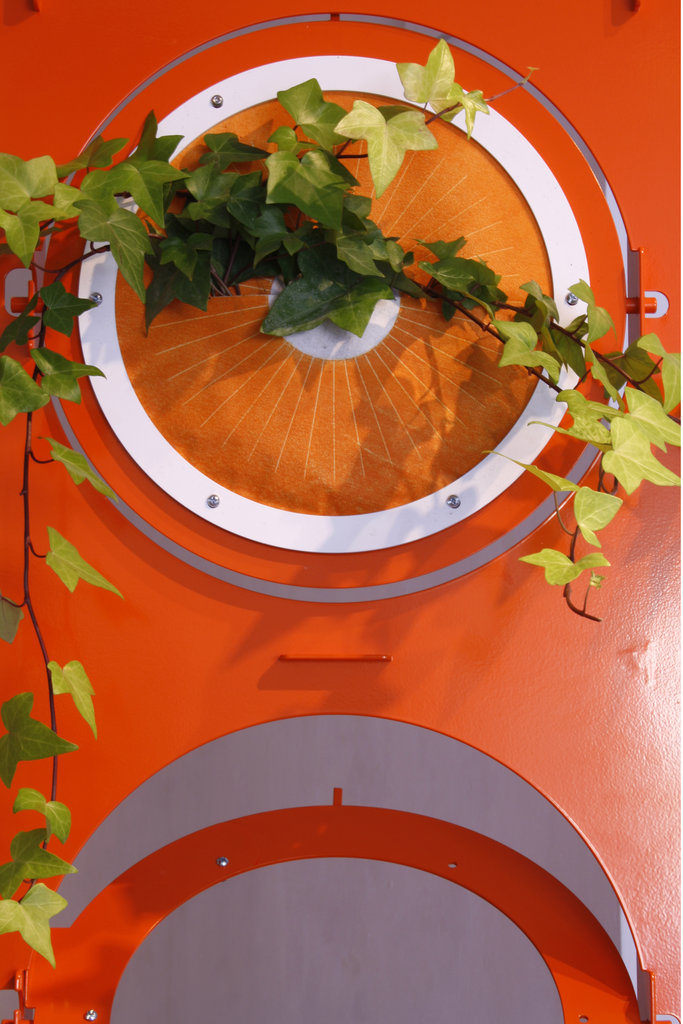 Candida Girling, Plant growing in totemic modular steel structure taken from Sculptural Living Wall Installation, canvas, steel and ivy, 2014.
Candida Girling, Plant growing in totemic modular steel structure taken from Sculptural Living Wall Installation, canvas, steel and ivy, 2014.
The manmade cityscape, along with synthetic materials used to construct the pieces, contrast her integration of flora and naturalistic color, but isntead harmonize the opposing ideals rather than reaffirm their separation. As shown in her digitally-rendered proposal, it immerses comfortably with the artificial urban environment while reintroducing elements of the original landscape.
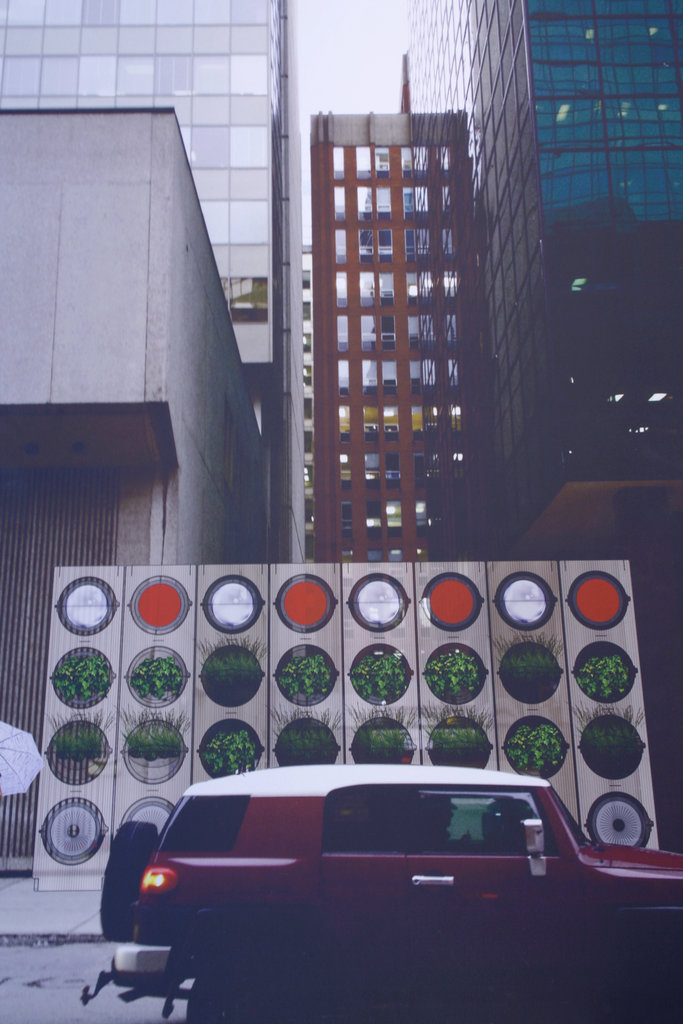 Candida Girling, Sculptural Living Wall Installation, 2014.
Candida Girling, Sculptural Living Wall Installation, 2014.
Girling collaborates with the composer, Aaron Davis, to introduce a symphony of city noises, activated only by a carbon-dioxide detector. Like Seeing Seberg with Mozart’s Concerto for Clarinet, A Slice of City Sky becomes truly immersive. The sounds of revving engines, car horns, passersby, and construction equipment allows the piece to escape the confines of the gallery into the public realm, as Girling intended.
Text and photo: Simon Termine
Exhibition information: John Abrams: Seeing Seberg & Candida Girling: A City Slice of Sky: An Urban Intervention, September 13 – October 5, 2014, loop Gallery, 1273 Dundas Street West, Toronto. Gallery hours: Wed – Sat 12 – 5, Sun 1 – 4 p.m.
